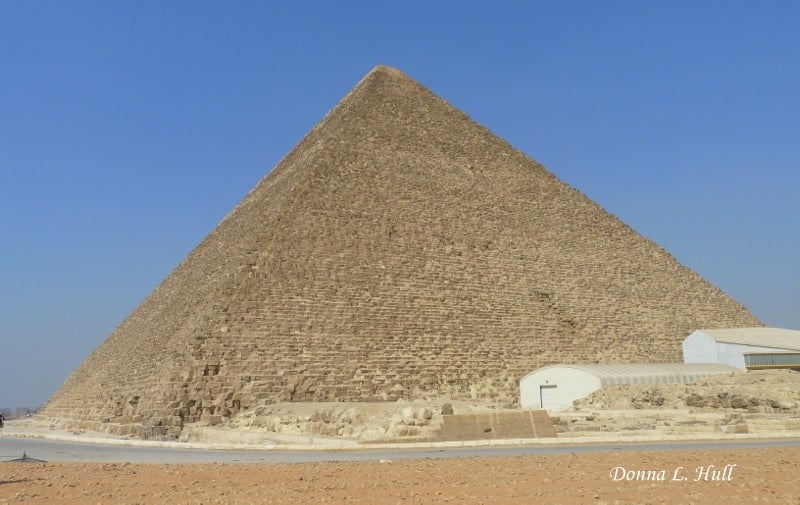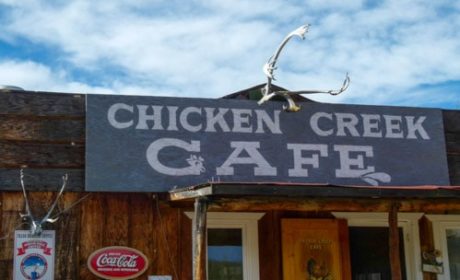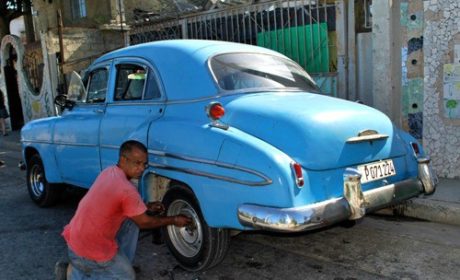With its intoxicating blend of the exotic and the historic, Jordan is a dream destination that deserves to be included on your list of bucket list trips, especially after reading our guide to Petra.
However, exploring this enigmatic off-the-beaten-path destination takes quite a bit of planning for travelers of any age. Grueling uphill hikes through soaring heat is not for the faint of heart. Thankfully, guest contributor, Debi Lander from ByLanderSea, has just returned from touring the area and has created a fantastic Boomer-centric Guide to Petra and other Jordanian sites.
Table of Contents
A Baby Boomers Guide to Petra
Dawn broke with a gentle, warm breeze and unseen birds chirped wake-up calls. Chalky dust stirred at my feet as I moved forward, dwarfed between terracotta colored rock walls, half as high as the Empire State building. I felt excited and humbled trekking down the same path used by the Nabataeans, the people who prospered here 2,300 years ago.

The Sig (pronounced “seek”) of Petra, Jordan is a mile-long ravine or dry riverbed of sinuous twists and turns tucked between 250-foot boulders. The passageway alternately narrows and widens. My anticipation grew as the guide pointed out the ancient water conduits, chiseled marks, niches, and tombs, camouflaged to the untutored eye, within the rose-colored sandstone.

Hidden at the end stands the Treasury or Al-Khazneh, the Arabic name one of the most famous facades anywhere—and now hailed as one of the New Seven Wonders of the World. The multi-columned, edifice, chiseled from a single slab, stands more than twice as tall as the heads on Mt. Rushmore, despite its mere two-story structure.
Mesmerized by its sight, I froze in my tracks. Everyone does; the first view of the temple’s immense height, delicate beauty, and fine detailing beguiles.
The ancient city of Petra flourished as the strategic crossroads of the spice and silk trade more than two millennia ago. But, changing routes and two ravaging earthquakes left the city nearly forgotten. By the 13th century, only local Bedouin tribes remembered Petra.
In 1812, Swiss explorer Jean Louis Burckhardt disguised himself as an Arab wanting to make an offering. He convinced a guide to take him to the area, but his guide became suspicious, forcing him to leave before fully inspecting the ruins. Even his writings remained off limits for decades.
Bedouins still walk the Sig, descendants of those who inhabited the complex from approximately 1,000 BC onward. UNESCO declared Petra a World Heritage site in 1985 and tribes were moved to nearby housing. Today, Bedouins pull camels and carts down the Sig waiting for tourists to purchase rides.
Boomer Travel Tip
MedjetAssist Members who are hospitalized 150 miles from home receive medical transport to a home-country hospital of choice. Memberships from $99.

Hollywood also discovered this intriguing place. The 1989 movie Indiana Jones and the Last Crusade featured Harrison Ford and Sean Connery’s miraculous escape from the Treasury building.
Playing the scene back in my head, gave me no desire to escape. I wanted to sit and bask in the glory. The walk down the Sig intoxicates better than a well-aged Merlot, but the Treasury has a rush more like a spine-tingling roller-coaster plunge.


The Sig and Treasury alone make Petra a compelling visit. Yet the 400-acre site includes an amphitheater with seating for 6,000-8,500, temples, tombs, stores and houses, plus a multitude of hiking trails. The one-day visit most tourists allot is not enough.

Moving beyond the Treasury takes you to Colonnade Street and the Royal Tombs. First comes the Urn tomb which features two-stories of arched stairways and vaulted rooms. The much smaller Silk Tomb stands nearby, irresistible with its spectacular coloring and variegation in the salmon-hued sandstone.
The gigantic Palace Tomb dominates the street, although missing the entire upper level. Measuring half a football field width and height make it the biggest at Petra.
By the time visitors pass these remarkable remnants of a long-lost age, most feel tired and hot. That makes the nearby restaurant an oasis, thankfully reached after crossing an open arid expanse past Roman ruins and a museum. I rested my legs and enjoyed a buffet lunch. Refueling is necessary before tackling the crown jewel, the Monastery and its fatiguing climb of 900 steps.

The hike to the top begins on unevenly worn rock stairs and passes by wind and water swept corridors. A few entrepreneurial Bedouins operate trinket stands along the way.
The ascent includes steep incline ramps along a very crooked path. Donkey rides offer a less strenuous option, but are treacherous in places. Eventually, you reach the top, exhausted, but then reenergized as soon as you view El-Dier. Its reward more than justifies the effort.
The sight of the immense near flawless urn-topped Monastery impresses no less than the mysteriously placed Treasury. Its side-screened location faces a large open plaza believed to have been used for rituals and ceremonial processions.

A seat at the hilltop café provides a relaxing way to observe the astonishing architecture. The rest comes in handy because the hike back down is honestly not much easier than the ascent. The steeply vertical angle takes careful foot placement (hiking poles are a good idea for the vertically challenged), but the plateau experience provided is beyond compare.
Exploring Petra requires a minimum of one day—I’d recommend two, which allows the addition of Little Petra, part of the complex reached by a different entrance, and Petra at Night, a candlelight view of the Sig and Treasury.
Boomer Travel Tip
In today’s travel climate, trip insurance is a must. Compare policies and rates at InsureMyTrip.
Frescoes in Little Petra
I briefly stopped at Little Petra the following morning. It looks like a vintage Dr. Seuss village design. Drippy castle-like stone facades with hollowed out rooms served as offices for the trading businesses in Petra.
I climbed up to a second level to peer into what scholars believe was a wealthy man’s living room. It boasted exquisite twisted vine frescoes incorporating cherubs. Discovered in 2007 they’ve have since been cleaned and restored. They remain behind barriers, but you can look in, managing a photo with a bit of twisting.

Intrigued by this art discovery, I hit the books upon my return home. I found a 2010 article in The Guardian that explains the importance of the frescoes.
Professor David Park, an eminent wall paintings expert at the Courtauld, claims that the paintings should make jaws drop. “Petra, he wrote, is a vast site at the cultural crossroads of the eastern Mediterranean, and among the rock-cut tombs and temples, the survival of a fragile wall painting that decorated a dining hall is extraordinary… The quality of the painting is matched by the luxury of its materials, including gilding and translucent glazes. It is the only surviving [in situ] figurative wall painting from the Nabataean civilization that created Petra. It provides an incredibly rare insight into the lifestyle of this ancient and little-known civilization.”
For more information on the Little Petra frescoes this Guardian article is a great resource.
Petra at Night

Not that many do, but I found Petra at Night a bit disappointing—it may have something to do with being so tired. (My day’s pedometer clicked off 29,000 steps.)
Luminaries line the walkway in the Sig, and the hundreds of candles flicker in front of the Treasury. They let you imagine how the Bedouin tribes must have experienced the place.
A very short concert with ancient instruments added to the historical aura and floodlights briefly illuminated the shrine. The walk back out seemed endless! I would recommend viewing Petra at Night the day before you explore the archeological wonder.
Guide to Wadi Rum
No guide to Petra, Jordan, would be complete without including a visit to the desert of Wadi Rum, about an hour from Petra. The site also hosted a cinematic legend, providing locations for the movie Lawrence of Arabia highlighted by British Intelligence Officer T.E. Lawrence’s epic battle. Touring in 4×4 wheeled Jeeps has become the modern way to explore.

However, the favored and most authentic mode of transportation remains the camel. If you’re a first-time rider, you may find the initial minutes discombobulating.
Dromedaries make an awkward, two-stage rise. Unnatural jostling to and fro follows, but adaption proves fairly quick and easy.
The feel of hooves compressing into the sand carpet is like nothing else. The panoramic view from the height is, to quote Lawrence, “vast, echoing and Godlike.”
Overnighting in a Bedouin tent camp sounds rustic, but doesn’t always work out that way. Tent camping in an actual goat hair tent with a carpeted floor and central bathrooms is similar to Scout camp.
With a bit of splurging an already fantastic experience soon becomes “glamping” (glamor camping) in rooms with ensuite bathrooms. Even the most budget-conscious have a dazzling choice—sleeping under the crystal clear starry sky.
Accommodations at these camps include Zarb, a delicious Bedouin dinner cooked in a sand-covered pit. The evening concludes with campers sipping sweet Bedouin tea as staffers play music on the lute and tabla.

Whatever the chosen mode of transportation or lodging you’ll leave Wadi Rum emotionally charged from the surreal scenery and full of lasting memories.
Other Jordanian sites worth visiting

Aqaba, a famous harbor on the Red Sea, offers boating and great snorkeling or scuba diving. Further up the coast, Dead Sea luxury resort hotels sparkle next to the often-iridescent water.
Relaxing on the beach can combine with a mud treatment and dip in the salty brine. Floating in the Dead Sea, a surreal experience to start with becomes indescribable when a mud application leaves your skin feeling silky!

The Romans were no strangers to Jordan. Jerash, called the City of a Thousand Columns, displays the best ruins outside of Italy. In some ways, I found them superior to their counterparts in Rome, as they haven’t been overly visited.
You’ll need at least a half-day to explore the expansive archeological destination. Recently, opera star Andrea Bocelli gave a concert in the amphitheater.

Other than Israel, no other country has more biblical sites than Jordan. Bethany Beyond the Jordan (river) attracts as the site of Jesus’ baptism.
It is common to see Christians being dunked in the River Jordan during their baptismal ceremony. Nearby, at Mt Nebo, stand where Moses first gazed upon the Promised Land.
The accommodating Jordanians offer farm-fresh, colorful food, but don’t expect burgers and fries! Meals begin with salad, fresh bread and an array of toppings like hummus, tabbouleh or moutabel, similar to baba ghanoush.
Americans generally don’t include the Middle East on their bucket list, which leaves them missing a great thing in Jordan. The Hashemite Kingdom, Jordan’s official name, is the safest country in the region and extremely welcoming to tourists. Jordan offers incredible historic sites, attractions, and adventures for luxury to budget travelers.
Direct flights from NYC arrive in Amman, the capital. Western-friendly hotels and local-run establishments await. My suggestion is to sign on for a 5-7 day tour of the country and prepare yourself for the thrill of a lifetime.
Guide to Petra Travel Tips
- Be aware that you will hike many, many steps within Petra. Wear comfortable walking shoes and hire a guide, if you don’t already have one. If you get tired in the afternoon, you can always hire a ride on a donkey, camel or chariot.
- Carry water, although you can buy it in from little shops within the complex. There is only one big restaurant reachable by a long walk.
Before leaving on an expensive bucket list trip, we purchase travel insurance that includes pre-existing condition coverage for the travelers and immediate family as well as a membership in a medical evacuation program. You should, too!
Disclosure: Visit Jordan provided my trip to Jordan, but I sincerely stand behind everything I have written. I’d make a return visit in a heartbeat.
Save to Pinterest




